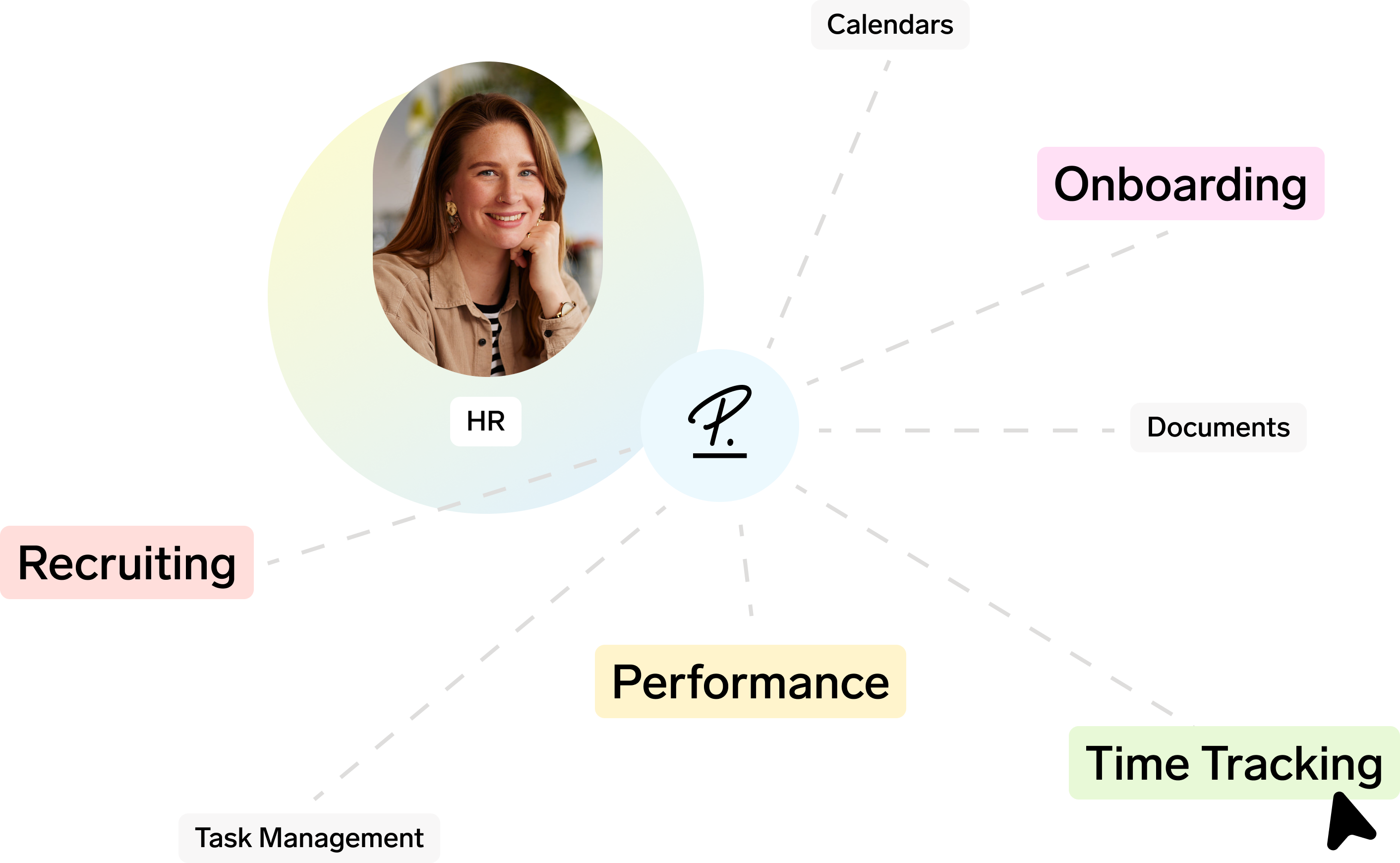
Automate Your HR Admin Tasks
Build accelerated, automated HR processes throughout your organisation – unlock the time you need to focus.
Discover Personio's Automation14. October 2021
5 Ways People Workflow Automation is Changing the Future of HR

As an HR leader, I know that opportunities are everything. They can help set your company up for success, and can drive growth in a host of ways. That's why People Workflow Automation, as a category, to me is so exciting: because it’s set to help HR realize many new opportunities.
How? It starts by automating people processes, across your entire business, to help HR go beyond itself, but I want to peel back the layers a bit and talk it through it more in-depth. Here are the five key ways I think people workflow automation is set to change the way HR is done. – Ross Seychell, Chief People Officer, Personio
1. By Reestablishing & Refocusing On People Processes
Whether onboarding a new employee, provisioning them with the applications they need to get the job done, or allowing another to easily call in sick or stay up to date with their team’s absences, people processes happen across your business all day, every day.
Simply put, your people processes need to be able to make your people, and your company, successful. They should keep things running smoothly by reducing delays, and they should facilitate the great work that needs to happen for businesses to grow.
In my view, people workflow automation is an incredible opportunity for HR teams to begin by revisiting the processes that happen around their people. Not only how they happen from a very functional standpoint, but if they are working and if they could be learned from or optimized.
It’s a refocusing and democratizing of enterprise automation that, in more distributed workforces and after the pandemic, is due for SMEs. Especially when it comes to onboarding, provisioning, or helping employees reach new levels of performance, now is a great time to revisit the work that goes on around your people.
2. By Removing Delays Across The Business
Attention fragmentation is a massive issue for so many organizations, and many may not even notice it. But, while delays like these may feel minor in the moment, they have a distinct snowball effect that adds up and ends up being a huge drain on productivity.
Studies have shown that each involuntary distraction costs people a delay of more than 47 total minutes of lost time switching between applications and getting back into the flow of work. So, for each vacation request, paperwork submission, or signature, you’re losing valuable time (and what could be achieved with that time).
And, that’s the last thing you want: For unnecessary delays to get in the way of work, or to get in the way of opportunities for your people and your business.
The course of the pandemic hasn’t made it easier, with an explosion of tooling leading to the average HR team needing 6 different applications, on average, to get their work done (as per a study conducted by Personio and Opinium across Europe).
People workflow automation’s emphasis on reducing and removing delays, across apps and teams, is a transformative element here. It’s a way for HR to focus on helping employees perform their best, without being held back by delays that get in the way of opportunities.
3. By Putting Productivity In The Spotlight
People processes, and all the potential delays involved, add up to hold back productivity and may lead to missed opportunities. Simply put, for all the time spent trying to simply keep up, you lose out on possibilities to make your work even better and to focus on a host of other things.
That might reveal itself in dwindling employee satisfaction or engagement scores, maybe it makes it more difficult for employees to recharge and take breaks, or at worst it could be a security risk or result in a lack of compliance across your entire organization.
Productivity, not only how but the way people work, is in the spotlight more than ever. And, through people workflow automation, HR’s role in that process has never been more pronounced. It’s becoming its own golden opportunity while completing changing the game in its own right.
Think of it like this: People workflow automation offers an integrated workflow, where one click triggers a flow across applications and teams, all to achieve the goal of hiring, managing, and developing employees from day one (and even before then).
It’s achieved by deep integrations to applications that span across the business, but it’s also giving HR the time and ability to focus on workforce productivity like never before.
4. By Empowering HR Teams To Scale
By providing an opportunity for small and mid-sized businesses to configure their own people-centric workflows, people workflow automation helps position HR teams to scale in a meaningful and sustainable way.
It’s done by crafting workflows that integrate applications, reduce delays, align stakeholders, and accelerate business, but it comes with the result of growing or transforming your HR team.
And I don’t simply mean in size, but in scope, too. It’s not only that your HR team may become larger, because maybe that doesn’t suit your organization at this time, but it increases the scope of how your team operates.
Especially after the past 18 months, where HR showcased their value in a variety of ways, continuing to elevate HR needs to happen.
Ultimately, it means that your HR is able to go beyond itself, and to touch multiple facets of the business where it can have a tangible impact.
5. By Enabling HR To Go Beyond HR
Building on that previous point, I have always tried to discuss and emphasize how central strategic HR needs to be and the position it needs to take within a business.
Basically, HR needs the time to focus on strategic initiatives and tasks to really help power an organization (and to help them scale).
People workflow automation, based on the concept of people processes that touch every level of business, opens up this conversation and the opportunity for HR teams.
Most importantly, it helps achieve organizational velocity. That’s a concept grounded in frictionless business operations and a better state of work, designed to help organizations achieve their ‘need for speed’ without sacrificing quality along the way.
So, all of a sudden, your people processes are not only easier, but your HR team can keep track of them, alter them, optimize them, and learn from them. All in a collective effort to bolster business. To me, that is the most exciting part.
Don’t Miss Out: People Workflow Automation Is Here
While things may be working at your company today, there’s a whole world of opportunity at your doorstep. The fact is that the days of HR as simply an administrator are dying, and fast, and People Workflow Automation is helping take things not only to a new level, but an entirely different one, too.
In sum, People Workflow Automation changes the way people work by getting your apps and your people ‘talking.’ And, from an HR perspective, that is the beginning of an endless world of possibilities for productivity and focus on your people.

About Ross Seychell
As a business leader with 20 years of HR experience, I have a strong passion for how a company’s most important asset – their people and culture – enables them to unlock and achieve their mission. After building out workplace strategies at high-growth companies such as Wise and King, I joined Personio as Chief People Officer to help us become the leading HR platform and tech employer in Europe.